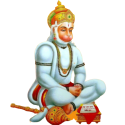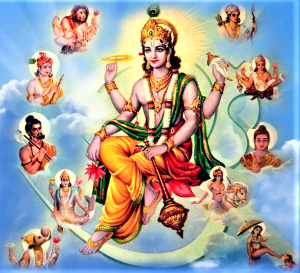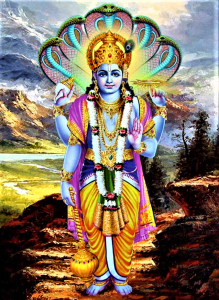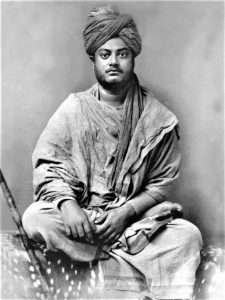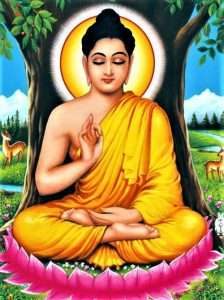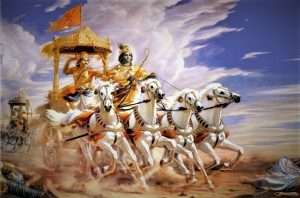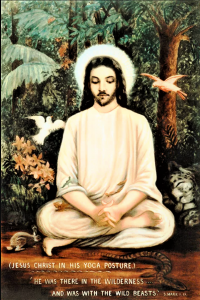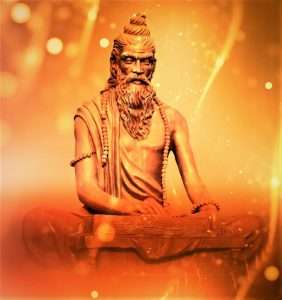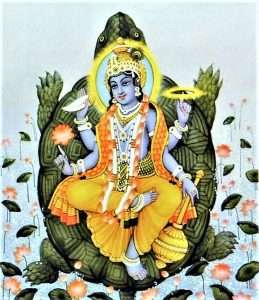Chitta and Vritti
The Sanskrit word “Chitta” is a very famous term in Yoga Sutra of Patanjali. The Yoga Sutra (1.2) says “Yogah chitta vritti nirodhah” which means “Yoga is the cessation of the modifications of the mind-stuffs.” The sutra highlights the words, “Chitta” and “Vritti”. What is “Chitta” and “Vritti”, need to be understood properly. These two words are very important and the book of Yoga Sutra has descried them with proper details. In order to understand this blog on Chitta better, please refer first to the blog on mind.
Chitta – The Sanskrit word “Chitta” means mind-stuff (store house of impressions; the past memories). Chitta is one of the components of Antahkaran (the fourfold mind). It is mental substance; the ground floor from which proceeds the three other components which are – Manas (Mind), Buddhi (Intelligence) and Ahankara (Ego). To know about Antahkaran and details of mind please refer to the blog on mind. Chitta includes all impressions – impressions of the past and present. Every action and experiences that we go through in our lives through various sense and motor organs are recorded in chitta. They create vrittis which guide our present behaviour of life to which each one of us is a subject. The English word “Consciousness” is an appropriate word to denote chitta and the word “awareness” is its function. Subjective mind, subconscious mind, unconscious mind and chitta are synonymous terms.
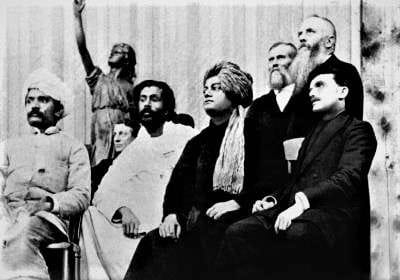
Chitta described by Swami Vivakananda – Swami Vivekananda wrote the first commentary in Engish on Yoga Sutra of Patanjali entitled, “Raja Yoga.” In describing chitta in Sutra (1.2), He says, “A good deal of explanation is necessary here. We have to understand what chitta is and what the Vritti are. I have eyes. Eyes do not see. Take away the brain centre which is in the head, the eyes will still be there, the retinae complete, as also the pictures of objects on them and yet the eyes will not see. The eye is the external instrument; we need also the brain centre and the agency of the mind. First, there is the instrument, then there is the organ, and third, the mind attached to these two. The mind takes the impression farther in, and presents it to the determinative faculty – Buddhi – which reacts. Along with this reaction flashes the idea of egoism. Then this mixture of action and reaction is presented to the Purusha, the real Soul, who perceives an object in this mixture. The organs (Indriya), together with the mind (Manas), the determinative faculty (Buddhi), and egoism (Ahamkara), form the group called the Antahkarana (the internal instrument). They are but various processes in the mind-stuff, called chitta. The waves of thought in the chitta are called Vrittis (literally “whirlpool”). The chitta is always trying to get back to its natural pure state, but the organs draw it out. To restrain it, to check this outward tendency, and to start it on the return journey to the essence of intelligence is the first step in Yoga, because only in this way can the chitta get into its proper course. Although the chitta is in every animal, from the lowest to the highest, it is only in the human form that we find it as the intellect. Until the mind-stuff can take the form of intellect it is not possible for it to return through all these steps, and liberate the soul. Immediate salvation is impossible for the cow or the dog, although they have mind, because their chitta cannot as yet take that form which we call intellect.
Thought, force and Vritti interconnection described by Swami Vivekananda – Swami Vivekananda says, what is thought? Thought is a force, as is gravitation or repulsion. From the infinite storehouse of force in nature, the instrument called chitta takes hold of some, absorbs it and sends it out as thought. Force is supplied to us through food, and out of that food the body obtains the power of motion etc. Others, the finer forces, it throws out in what we call thought. So we see that the mind is not intelligent; yet it appears to be intelligent. Why? Because the intelligent soul is behind it. The real universe is the occasion of the reaction of the mind. A book form, or an elephant form, or a man form, is not outside; all that we know is our mental reaction from the outer suggestion. The real man is behind the mind; the mind is the instrument in his hands; it is his intelligence that is percolating through the mind. It is only when you stand behind the mind that it becomes intelligent. When man gives it up, it falls to pieces and is nothing. Thus, you understand what is meant by chitta. It is the mind-stuff, and Vrittis are the waves and ripples rising in it when external causes impinge on it. These Vrittis are our universe.
Functions of Chitta – The important functions of chitta are – storing experiences and impressions, memory, attention, enquiry, investigation, concentration, meditation, reflection, contemplation, maintaining awareness, removal of the veil of ignorance, causing vritti in order to notice the world and its experiences. When we do the Japa (chanting) of a Mantra, then chitta does the remembrance of mantra. Whenever we say to someone, “concentrate your mind” then we mean “concentration of chitta”. Chitta has more powerful work than mind and intellect.

Vritti – The Sanskrit word “vritti” comes from the word “vritt” which means a circle. The word “vritt” is very important here. What is a circle? We know the property of a circle that the beginning and end of it is untraceable. Vritti means a thought-wave which is a modification of mental substance in chitta. Hence the “vrittis” of chitta like a circle is untraceable in terms of its beginning and end. Nobody can say when the first vrriti arose and ceased. Vritti is a continuous process. Just as the waves rise from the surface of ocean similarly, vrittis arise from the surface of the ocean of chitta. It is like a whirl-pool. It is caused by Avidya (ignorance – body, sense and mind complexity). When ignorance is destroyed by Knowledge (Realization of the Self; Atman), vrittis cease.
Why Vritti arises – It is an impossible question to answer as to why vrittis arise. The simple answer is that it is natural functioning of Antahkarana (chitta). It is the windows through which we see the world. It is vrittis which create the universe which we relate to. In terms of experiencing and enjoying the world including various names and forms, vrittis are important tools.
Functions of Vritti – The Vrittis of chitta remove the veil (layer of ignorance) of objects which envelop them. This helps the perception of objects possible. For example, when we look outside, we see too many things but we actually see only a few things about which we get the knowledge or we become aware of. The rest things we do not see or notice because the layers of ignorance to other objects were not removed or it was incomplete. When the layers of ignorance are removed then only the objects are easily noticed. Hence vrittis are a very helpful tool. Swami Sivananda writes, “Vrittis help the evolution of a man till he attains perfection (Jivanmukti). It is vritti that opens the Kundalini in a Jnani in the Ajna Chakra and joins it in Sahasrara. This is one path.”
Pleasant and not-pleasant Vritti – The Yoga Sutra of Patanjali (1.5), says that the Vritti of Chitta are of five kinds which are Klista (Not-pleasant) and Aklista (Pleasant). This simply means that the experiences of the world which we go through Vritti are not always happy. They are sometimes pain-giving also. We know from our experiences of lives that, we have a mix of happy and unhappy experiences; may be more happy, less unhappy and vice-versa.
Five kinds of Vritti – According to the Yoga Sutra of Maharshi Patanjali (1.5), the Vritti are of five kinds –
- Pramana (Right knowledge, Proof) – Pramana is confirmation which simply means that two of our perceptions do not contradict each other. Yoga Sutra (1.7) describes three elements/types of Pramana as follows –
Pratyaksha (Drect perception) – It is that what we perceive directly through our senses. For example, we see something and out seeing is the proof that the thing exists.
Anumana (Inference) – It is some sign through which we perceive a thing which may or may not actually exist. For example, we see smoke which infer that there must be fire around.
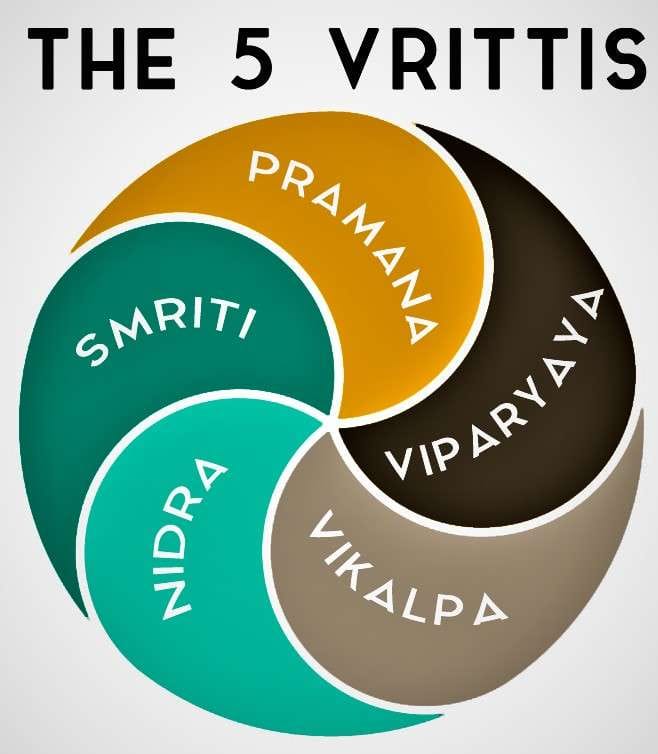
Agama (Competent evidence, words of enlightened people) – Agama is also called, “Aptavakya”. It is the direct experience and evidence of enlightened Yogis. This requires a little more explanation. Swami Vivekananda writes in His commentary of Yoga Sutra of Patanjali (1.7), “Aptavakya”, is the direct evidence of the Yogis, of those who have seen the truth. Before their mind, the past, the present, and the future are alike, one book for him to read; he does not require to go through the tedious processes for knowledge we have to; his words are proof, because he sees knowledge in himself. “What is the proof of their words?” The proof is their direct perception. There is knowledge beyond the senses, and whenever it does not contradict reason and past human experience, that knowledge is proof. Any madman may come into this room and say he sees angels around him; that would not be proof. In the first place, it must be true knowledge, and secondly, it must not contradict past knowledge, and thirdly, it must depend upon the character of the man who gives it out. We have first of all to see that the man who declares himself to be an Apta is a perfectly unselfish and holy person; secondly, that he has reached beyond the senses; and thirdly, that what he says does not contradict the past knowledge of humanity. Any new discovery of truth does not contradict the past truth, but fits into it. And fourthly, that truth must have a possibility of verification. No one who sells his knowledge is an Apta. All these conditions must be fulfilled; you must first see that the man is pure, and that he has no selfish motive; that he has no thirst for gain or fame. Secondly, he must show that he is superconscious. He must give us something that we cannot get from our senses, and which is for the benefit of the world. Thirdly, we must see that it does not contradict other truths; if it contradicts other scientific truths reject it at once. Fourthly, the man should never be singular; he should only represent what all men can attain.”
- Viparyaya (Wrong knowledge, Misconception) – It is wrong knowledge, delusion or misconception. For example, a man and a woman are seen together by someone who believes them as husband and wife but actually they were brother and sister. Experiencing snake in a rope is also Viparyaya. It is something that does not exist, still the experiencer imposes it on himself.
- Vikalpa (Imagination, Fancy, Verbal delusion) – It is verbal delusion. We hear a word and we come to a conclusion without taking time to consider its meaning. For example, when we hear words like God, beauty, nature and so on, we interpret them differently. We all have our own concept of these words. This is imagination and delusion.
- Nidra (Sleep and Dream) – It is sleep and dreams that we experience. When we are awake then we remember that we slept and dreamed. Our memory is always of some perception. This means that there was some kinds of waves (thoughts) even during sleep and dream that make us remember of dream and sleep. If there were no waves during sleep, then we would have no perception. Therefore, we would not remember them. Sleep is disconnection of the senses from sense objects. When the perception of the world becomes intense for mind and brain then we need to disconnect for a while to feel peace. The state of sleep works in the same way which withdraws senses from objects, so that mind comes to some peace.
-

Swami Vivekananda – a volcanic monk Smriti (Memory) – It is the coming back of recorded impressions to the surface of Chitta (consciousness, mind-stuff). It is the work of Chitta. Memory comes from Right knowledge, Wrong knowledge, Verbal delusion and Sleep. That which comes to the surface of Chitta during wakeful state is called memory and the same which comes during sleep is called dream. Memory always has a connection with the past.
Methods to control the Vritti – It is the Vritti of Chitta which hide our true nature. Without the Vritti, we are in our own true nature. The Yoga Sutra of Patanjali (1.12) says, “through Abhyasa (practice) and Vairagya (detachment)”, the Vritti can be controlled. Yoga Sutra (1.13) says, “practice is continuous struggle to keep the Vritti restrained”, and Yoga Sutra (1.14) says, “detachment is effect or power which comes by giving up the thirst after sense objects either seen or heard”. Yoga Sutra provides many methods to control the Chitta such as Abhyasa and Vairagya, Kriya Yoga and Ashtanga Yoga (8 limbs of Yoga) etc. To know more about it please refer to the blog on Yoga Sutra of Patanjali and Mind. Mind gains great strength when the Vritti are destroyed. Some vrittis are very strong then they require more efforts for their destruction. Most Vritti are very weak and they melt easily. “Practice silence and try to enter into the silence. Silence is the quality of Brahman (Atman; Soul). Chant AUM (Om) with deep Bhava (feeling) couple of times in the morning after some asana, pranayama and subtle kriyas. After repeated chanting of Om, Chitta becomes peaceful. It is at this moment witness yourself by being detached. You may feel, a lot close to yourself. Continue with this. Make this an integral part of your life. Persist on and on.” When all the Vritti die, still the subtle Samskara (impressions) and the frame of mind remain. In the Nirbija Samadhi even the Samskara are fried up. Then comes the realization of one’s own true nature which is the state of freedom.
Vishayakara Vritti and Brahmakara Vritti – This is the nature of Chitta that it assumes the shape of the object it concentrates itself upon. It is vritti and identification with the vritti which causes attachment and bondage.
- Vishayakara vritti – It is when Chitta thinks of sense objects and dwells on them. Then it assumes the shape of those objects. This is Vishayakara vritti.
- Brahmakara Vritti – It is when Chitta thinks of Brahman, Infinite, God and dwells upon them. Then it assumes the shape of Brahman, Infinite and God. This is Brahmakara Vritti.
As a spiritual practitioner, we should be vigilant in watching the mind and its activities. We cannot have Vishayakara Vritti and Brahmakara Vritti (thought of Brahman) at the same time. We should slowly aim to convert Vishayakara Vritti into Brahmakara Vritti. There is a very hard work but there have been many people in the history of humanity who have done this and experienced their own true nature.
Chitta Bhumi or Chittabhumika (Grounds of Chitta) – Sage Vyasa made an important commentary of the Yoga Sutra of Sage Patanjali which is called the Vyasa Bhasya. In the commentary, sage Vyasa mentions about the five Bhumi (grounds) of Chitta. These grounds are different manifestations of Chitta. These Bhumi or Bhumika of Chitta have also been mentioned by Swami Vivekananda on his commentary of Yoga Sutra of sage Patanjali entitled, “Raja Yoga”, in the explanation of Sutra (1.2). They are –
- Mudha –Dull as it is filled with Tamas.
- Kshipta – Highly agitated, chaotic and fickle as it is filled with Rajas.
- Vikshipta – Comparatively focused and preoccupied but unable to focus. It has elements of Sattva.
- Ekagra –One-pointed as it tries to focus. It has more elements of Sattva.
- Niruddha – Concentrated and this brings experience of Samadhi. It is filled with pure Sattva.
How does memory arise – Swami Sivananda describes different ways and different situation through which memory in chitta comes up. They are –
- Smriti-Hetu (Cause of memory) – One receives a gift from friend. When he uses the fan, it may remind him of his friend.
- Sadrisyata (Similarity of objects) – One’s house is of yellow colour. He visits somewhere far and sees another house of the same colour. It reminds him of his house.
- Viparitata (Dissimilarity in objects) – One visits a desert area. This vision may remind him of ocean.
- Karya-karana-sambandha (Relation between cause and effect) – We see smoke somewhere and we conclude that there is fire around.

Samskara – The waves of thought arise in Chitta, it floats on the surface for sometimes and then it sinks down deep into Chitta. Here it stays concealed and has subliminal action. This becomes Samskara (impression). All samskara (impressions) are embedded in Chitta; subconscious mind. Not even a bit is ever lost. The seat of subconscious mind is cerebellum or hind brain. When some Samskara float at the surface of conscious mind, it goes back again as a big wave. All memories that we are able to recollect happens with the help of Samskara. As soon as we see an object, we get knowledge of it and a particular Samskara is immediately formed in subconscious mind. Further at any time, this particular Samskara can create a memory of the object. Our nature of thoughts and desires (both good and bad) depend upon the nature of our Samskara (both good and bad). But even if we have had bad Samskara, we can create good Samskara by practising virtuous actions such as practising Yoga, meditation, charity, chanting, control of senses, study of scriptures, looking after sick and needy people, saints, holy people and so on. God Krishna says in Bhagavad Gita (9.30) –
Sanskrit –
अपि चेत्सुदुराचारो भजते मामनन्यभाक्।
साधुरेव स मन्तव्यः सम्यग्व्यवसितो हि सः।।9.30।।
Transliteration –
Api chetasu duracharo bhajate mam ananyabhak
Sadhureva sa mantavyah samyag vyavasito hi sah (9.30)
Translation –
Even if the most sinful who worships Me (God) with explicit heart and devotion, he too is considered virtuous, because he has made a proper resolve.
Hence it is important that we should engage ourselves into good and virtuous actions in order to produce good Samskara. For more information, please refer to blog on Karma.
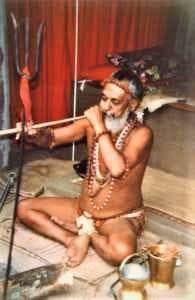
Spiritual discipline destroys Samskara – All spiritual disciplines aim to burn all Samskara. As we progress in our spiritual efforts, we experience layers of Samadhi (superconscious mind) and gradually come across all impressions latent in Chitta. Eventually when we experience Nirbija Samadhi, then all Samakara (impressions) cease and we are in our own true nature (Self, Soul). For more information, please refer to blog on Karma.
End of Samskara leads to moksha (liberation) – At the death of physical body, the Samskara in Chitta continue from birth to birth until one attains liberation. Each time when we are born, through various experiences of lives, we create different kinds of Samskara. We take birth again and again until all Samskara are burnt by attaining Nirbija Samadhi. Nirbija Samadhi brings final emancipation and liberation.
Conclusion – Chitta is a very important part of our personality as it guides our lives to a great extent by developing the Vritti. In Yoga Sutra of Patanjali, we find proper understanding of Chitta and Vritti and practical methods to cease them. The Vritti are necessary to manage life in a proper way but it should not be such that it brings further complications. Chitta gets coloured with the impressions it receives. Therefore, we need to provide Chitta with impressions like virtuous thoughts and actions which strengthen and pacify Chitta. Swami Sivananda prescribes a new kind of Vritti called, “Brahma Vritti” (Vritti of excellence, attainment of perfection, Almighty God) which should be cultivated through Yoga and intense spiritual discipline. This is responsible for the evolution of mind. According to Swami Satyananda Saraswati, “the cessation of worldly Vritti and the attainment of the spiritual Vritti, a spiritual mentality, is the purpose of Yoga.” We should wilfully work hard towards developing this new mentality for a more peaceful personal life, family life, social life and a more peaceful world.
With Love and Gratefulness (Founder Rohit Kumar)
Source – Gita, Yoga Sutra, words of Swami Vivekananda, Swami Sivananda, Swami Satyananda, internet resources and personal study.
Hari Om Tat Sat!

